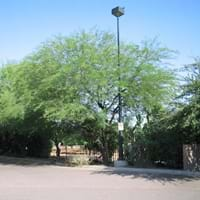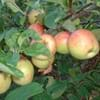Life Span
Perennial
Perennial
Origin
Eastern Europe, Southern Europe, Russia/Siberia, Southern Asia, Western Asia
Northeast Mexico, Southeastern United States
Types
fuji, jonathan apple
Not Available
Habitat
Cold Regions, gardens
Hillside, Slopes
USDA Hardiness Zone
3-8
9-11
AHS Heat Zone
8-1
Not Available
Sunset Zone
1a, 1b, 2a, 2b, 3a, 3b, 6, 7, 14, 15, 16
Not available
Habit
Oval or Rounded
Arching/Fountain-shaped
Flower Color
White, Pink
White
Flower Color Modifier
Bicolor
Bicolor
Fruit Color
Red, Yellow green
Brown
Leaf Color in Spring
Green
Dark Green
Leaf Color in Summer
Green
Light Green
Leaf Color in Fall
Green, Light Yellow, Brown
Dark Green
Leaf Color in Winter
Light Green
Light Green
Leaf Shape
Oval Cordate
Elliptic
Plant Season
Spring, Fall
Spring
Sunlight
Full Sun, Partial Sun, Partial shade
Full Sun
Growth Rate
Medium
Medium
Type of Soil
Clay, Loam, Sand
Dry, Loam, Sandy
The pH of Soil
Acidic, Neutral
Slightly Alkaline
Soil Drainage
Well drained
Dry
Bloom Time
Early Spring, Spring
Early Spring, Late Spring, Mid Spring
Tolerances
Drought
Drought
Where to Plant?
Ground
Ground
How to Plant?
Grafting, Seedlings, Stem Planting
Seedlings
Plant Maintenance
Medium
Low
Watering Requirements
Do not water frequently
Do not water excessively
In Summer
Lots of watering
Adequately
In Spring
Moderate
Average Water
In Winter
Average Water
Average Water
Soil pH
Acidic, Neutral
Slightly Alkaline
Soil Type
Clay, Loam, Sand
Dry, Loamy, Sandy
Soil Drainage Capacity
Well drained
Dry
Sun Exposure
Full Sun, Partial Sun, Partial shade
Full Sun
Pruning
Prune central stem, Remove lateral branches
No pruning needed
Fertilizers
Apply 10-10-10 amount, fertilize in growing season, Fertilize the soil before planting
Not Available
Pests and Diseases
Bacterial Blight, Bacterial Canker, Leaf rust, Red blotch, Ring Rot, Woodpecker feeding
Healthy tree
Plant Tolerance
Drought
Drought
Flower Petal Number
Single
Single
Foliage Texture
Medium
Fine
Foliage Sheen
Matte
Matte
Attracts
Bees, Butterflies, Hummingbirds, Insects
Birds, Flies
Allergy
Peripheral Edema, Vomiting
Not Available
Aesthetic Uses
Cottage Garden, Showy Purposes
Not Used For Aesthetic Purpose
Beauty Benefits
Acne, For treating wrinkles, Improve skin tone, Moisturizing, Stops hair loss
Not Available
Environmental Uses
Food for animals, Shadow Tree, soil stabilisation, Windbreak
Erosion control
Medicinal Uses
Acne, Alzheimer’s Disease, Anemia, constipation, Gastrointestinal disorders, Hair Loss, Parkinson
Fever, Kidney problems, Not Available, Urinary tract problems
Part of Plant Used
Fruits
Flowers
Other Uses
Acts as a natural source of rain water for birds and insects., Cosmetics, Used As Food
Food for animals, Food for insects
Used As Indoor Plant
No
No
Used As Outdoor Plant
Yes
Yes
Garden Design
Edible, Fruit / Fruit Tree
Rock Garden / Wall
Botanical Name
MALUS domestica 'Northern Spy'
Senegalia berlandieri
Common Name
Apple, Cider Apple, Cooking Apple, Eating Apple, Northern Spy Apple
Acacia
In Hindi
Northern Spy Apple
Acacia
In German
Northern Spy Apfel
Acacia
In French
Northern Spy Pomme
Acacia
In Spanish
Espía del Norte de Apple
Acacia
In Greek
Βόρεια κατάσκοπος της Apple
Acacia
In Portuguese
Northern Spy a Apple
Acacia
In Polish
Northern Spy Jabłko
Acacia
In Latin
Northern Spy Apple
Acacia
Phylum
Magnoliophyta
Magnoliophyta
Class
Magnoliopsida
Magnoliopsida
Clade
Dicotyledonous, Rosids
Not Available
Tribe
Not Available
Acacieae
Subfamily
Not Available
Mimosoideae
Number of Species
Not Available
Not Available
Difference Between Northern Spy Apple and Acacia
If you are confused whether Northern Spy Apple or Acacia are same, here are some features about those plants to help you choose better. Many people think that these two plants have the same characteristics, but one can see Northern Spy Apple and Acacia Information and learn more about it. Fertilizers required for proper growth of Northern Spy Apple are Apply 10-10-10 amount, fertilize in growing season and Fertilize the soil before planting, whereas for Acacia fertilizers required are Not Available. Hence, one should know the basic difference between Northern Spy Apple and Acacia if you are planning to have them in your garden to enhance its beauty.
<
Flowering PlantsImportance of Northern Spy Apple and Acacia
Want to have the most appropriate plant for your garden? You might want to know the importance of Northern Spy Apple and Acacia. Basically, these two plants vary in many aspects. Compare Northern Spy Apple and Acacia as they differ in many characteristics such as their life, care, benefits, facts, etc. Every gardener must at least have the slightest clue about the plants he wants to plant in his garden. Compare their benefits, which differ in many ways like facts and uses. The medicinal use of Northern Spy Apple is Acne, Alzheimer’s Disease, Anemia, constipation, Gastrointestinal disorders, Hair Loss and Parkinson whereas of Acacia is Fever, Kidney problems, Not Available and Urinary tract problems. Northern Spy Apple has beauty benefits as follows: Acne, For treating wrinkles, Improve skin tone, Moisturizing and Stops hair loss while Acacia has beauty benefits as follows: Acne, For treating wrinkles, Improve skin tone, Moisturizing and Stops hair loss.
Compare Facts of Northern Spy Apple vs Acacia
How to choose the best garden plant for your garden depending upon its facts? Here garden plant comparison will help you to solve this query. Compare the facts of Northern Spy Apple vs Acacia and know which one to choose. As garden plants have benefits and other uses, allergy is also a major drawback of plants for some people. Allergic reactions of Northern Spy Apple are Peripheral Edema and Vomiting whereas of Acacia have Not Available respectively. Having a fruit bearing plant in your garden can be a plus point of your garden. Northern Spy Apple has showy fruits and Acacia has no showy fruits. Also Northern Spy Apple is not flowering and Acacia is flowering. You can compare Northern Spy Apple and Acacia facts and facts of other plants too.





